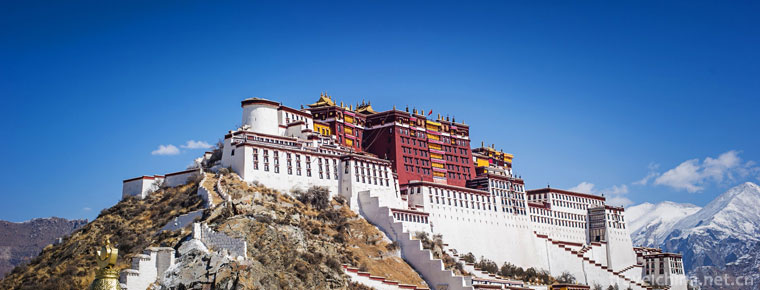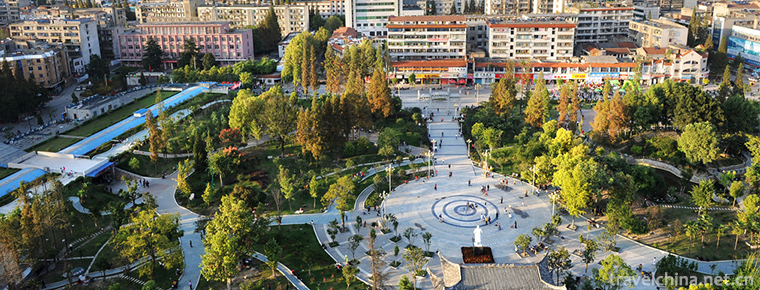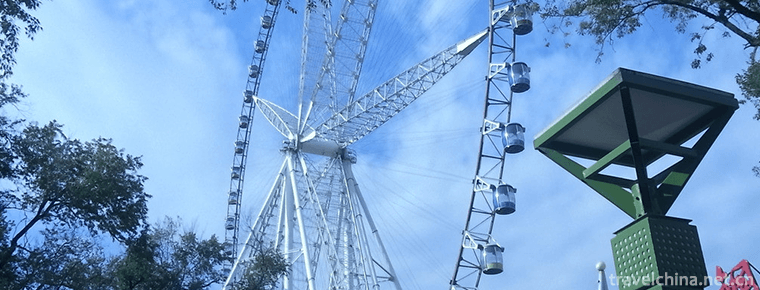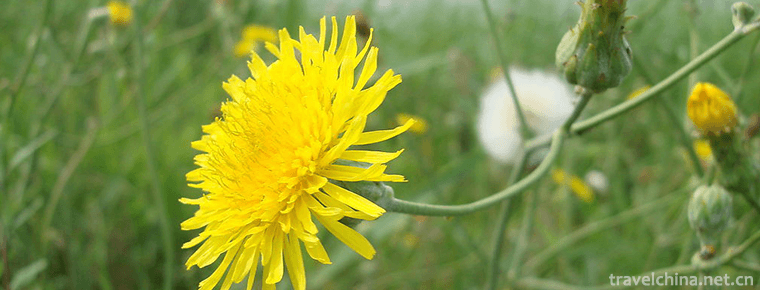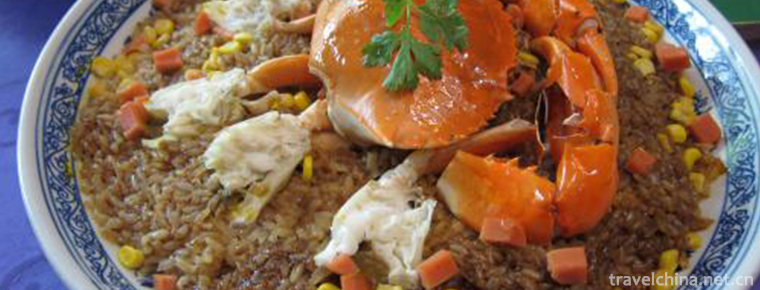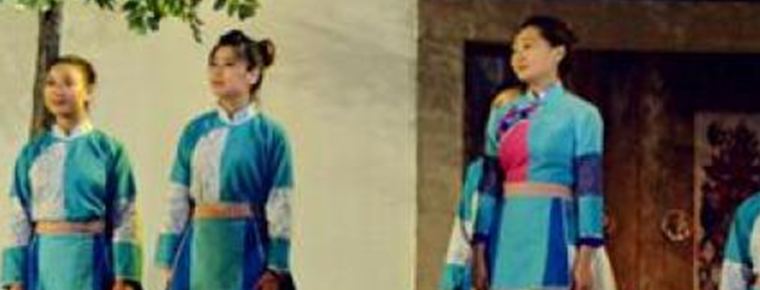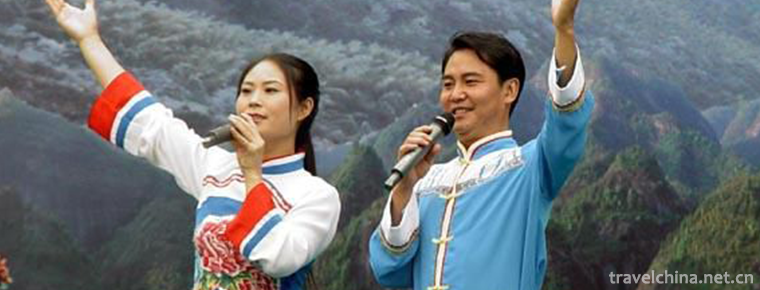The Ming Toms
The Ming Toms
The Obvious Tomb is located on Chunde Mountain, 5 kilometers northeast of Zhongxiang City, Hubei Province. It was built in 1519 in Zhengde, Ming Dynasty. It was built in 1566 in Jiajing, Ming Dynasty. It lasted 47 years. It is the tomb of Emperor Gongrui, father of Emperor Jiajing of Ming Dynasty, dedicated to Emperor Zhu Youchang and his mother, Cixiao.
Obviously, the mausoleum is the only Mausoleum of the Ming Dynasty in the six provinces of central and southern China. It covers an area of 183.13 hectares, and is the largest single mausoleum in the mausoleum of the Ming Dynasty. Its unique layout and architectural techniques play a connecting role in the regular system of the mausoleum of the Ming Dynasty, especially the mausoleum structure of "one mausoleum and two tombs" is unique among the mausoleums of the emperors of all previous dynasties.
In January 1988, the Obvious Mausoleum was listed as a national key cultural relic protection unit by the State Council. On November 30, 2000, it was approved by UNESCO to be included in the World Heritage List as part of the "Royal Mausoleum of the Ming and Qing Dynasties". In April 2008, Xianling was approved by the National Tourism Administration as a national AAAA-level tourist attraction.
Historical evolution
In the fourteenth year of Ming Zhengde (1519), on June 17, the fourth son of Zhu Jianshen of Ming Xianzong died. Zhu Houjuan, the emperor of Wuzong in Ming Dynasty, gave him a gift as "dedication". He chose an auspicious place in Songlin Mountain and ordered a cemetery according to the prince. He was buried on the third day of April in the following year. In March of 1521, in Zhengde 16 years, Zhu Houyu was ushered into Beijing as a successor to the Great Communist Emperor of Ming Dynasty. After Zhu Houyu became the emperor, he established an independent system of heirs and pursued Zhu Youchao, his biological father, as emperor regardless of the opposition of his courtiers. In June of the same year, Zhu Youchao was respected as "Emperor Xingxian".
In March of the third year of Jiajing in the Ming Dynasty (1524), the emperor was honored as "dedicated emperor". In July, the emperor God was honored as "Emperor Kaogong Mu dedicated emperor" in Guande Hall, the eastern chamber of Fengxian Hall.
In September of the fifth year (1526) of Jiajing in the Ming Dynasty, Emperor Gongmu was dedicated to the world temple; in September of the seventeenth year (1538) of Jiajing, the temple was named Ruizhong; in the twenty-seventh year (1548) of Jiajing, Emperor Gongmu was dedicated to the Tai Temple. After Zhu Youbo was honored as the emperor, the original Xingxian tomb was upgraded and rebuilt according to the regulations of the emperor's mausoleum.
In April of the second year of Jiajing in Ming Dynasty (1523), the original black tiles of Xingxian Wang Tomb were replaced by yellow glazed tiles, and Shenlu Bridge was built.
In March of the third year of Jiajing in the Ming Dynasty (1524), the tomb was officially renamed Xianling.
In the first month of the next four years (1525) of Jiajing in Ming Dynasty, Zuo Shilang and Gu Lin of the Ministry of Industry were appointed to supervise the construction of a new Xuangong according to Zhu Houyu's "schema" and to connect the old and new Baocheng with a tall masonry platform called Yaotai, thus forming a special pattern unprecedented in the Imperial mausoleums of Ming Dynasty.
In December of the sixth year of Jiajing (1527), Zhu Houyu "ordered the restoration of Xianling Mausoleum as the seven mausoleums of Tianshou Mountain". He renovated Baocheng and Baoding and rebuilt the Hall of Enjoyment. He added Fangcheng Ming Tower, Ruigong Shengde Stele Building and Dahongmen, and built observation pillars and 12 pairs of stone statues on both sides of Shenlu in front of Longfeng Gate, and began large-scale reconstruction.
In February of the 10th year of Jiajing in Ming Dynasty (1531), Zhu Houyu sealed Songlin Mountain as "Chunde Mountain" and built a stele and pavilion. In December of the seventeenth year of Jiajing (1538), Zhu Houyu's biological mother, the Empress Dowager, died of illness. Zhu Houyu went to Tianshou Mountain in Changping, Beijing, to divine Jiyang under Dayu Mountain, southwest of Changling, to move Xianling northward. He ordered Wuding Hou Guoxun and Shangshu Jiangyao of the Ministry of Industry to build a new mausoleum and "to welcome the Emperor Kaozi Palace to move here".
In March of the eighteenth year of Jiajing in Ming Dynasty (1539), Zhu Houyu returned to Beijing after his patrol to the south, inspected Dayu Mountain's mausoleum in April, and compared it with the Fengshui situation of Xianling Mausoleum, determined that "the Valley is empty and miserable, is not as perfect as Chunde Mountain"; decided to use the previous proposal, "Drive the Nanji with mercy". In May of the same year, Hou Cuiyuan of Jingshan, a sect of the Shizong, escorted his mother's coffin Nanjiao, and was buried with Zhu Youlong in the Xinxuan Palace of Xianling in July.
In the 21 years of Jiajing in Ming Dynasty (1542), Zuo Wei in Jingzhou was replaced by Xianling Wei, which was filled by more than 1200 people such as Li Maongcai of the Zhengjun. In September, Huang Jin, the eunuch of the Imperial Palace, was ordered to repair the Emperor Yu'en Hall of the Xianling Tomb, and to work with Lu Jiedi, the right attendant of Huguang, the governor.
In April of the thirty-third year (1554) of Jiajing in Ming Dynasty, he also ordered to rebuild the Enjoyment Hall, namely the "Rujingling System" of the Yu En Hall, to be supervised by Lu Xun, the right waiter of the Ministry of Industry and the right governor of the Capital Inspection.
In July of the thirty-fifth year of Jiajing in Ming Dynasty (1556), imperial edicts were made to repair the left corner gate of Erhongmen in Xianling, the freeway, the imperial bridge and the wall.
In September of the 38th year of Jiajing in Ming Dynasty (1559), the expansion project of Xianling was finally completed.
In September of the forty-fifth year (1566) of Jiajing in the Ming Dynasty, Zhang Shouzhi, the left attendant of the Ministry of Labor, was sent to rebuild the Yu En Temple, and the construction of the Xianling Tomb was finally completed.
At the end of the Ming Dynasty, the Xianling Tomb was destroyed. It is said that it was recorded in Guoqu that Li Zicheng went to Chengtian in December of 1642. Mausoleum and Hall of Enjoyment were attacked, and the wooden structures of the ground buildings were partially destroyed.
In the Qing Dynasty, with the intervention of local officials, Xianling was protected to a certain extent. The existing stone tablets in Xianling during the period of Xianfeng recorded the announcements of local officials demanding the protection of Xianling in the countryside.
During the period of the Republic of China, the mausoleum area of Xianling was barren and turned into arable land. The nearby mountain people listened to the rumor that the stone statues were resurrected to eat crops at night and destroyed some of them.
During the Anti-Japanese War, Japanese invaders invaded Zhongxiang and stole some stone-carved cultural relics from Xianling.
geographical environment
Location context
The Obvious Mausoleum is located in Chunde Mountain, 5 kilometers northeast of Zhongxiang City, Hubei Province. It is located between 31 ~12'20 -31 13'00 in the north latitude and 112 37'50 -112 38 in the East longitude. The mausoleum covers an area of 183.13 hectares, and the whole mausoleum is feudal with two cities. The circumference of Wailuo City is more than 3600 meters, winding up and down in the mountains.
Climatic characteristics
Zhongxiang City, where the Mausoleum is located, belongs to the north subtropical monsoon climate zone. It has the characteristics of distinct seasons, heat and rain sharing, abundant sunshine, abundant rainfall, long frost-free period and mild climate. It is located in the East-West climate transition zone of Hubei Province (112 degrees east longitude), near the North-South climate transition zone (31 degrees north latitude), alternating cold and warm in spring, slow temperature rise in early spring and late retreat in spring. In autumn, there are autumn drought and rainy season, sometimes autumn cold comes earlier; in winter, there are fewer rain and snow, and the cold season is short. There are many disastrous weather such as drought, waterlogging, tornado all the year round.
Tourism information
Ticket Price
Adult ticket: 70 yuan. Active servicemen, disabled persons, children under 1.2 meters and elderly people over 70 years of age are exempted from tickets; elderly people over 60 years of age and under 70 years of age, primary and secondary school students are half-votes.
traffic
No. 6 Bus Line in Zhongxiang City, Hubei Province is directly accessible. From the long distance bus station, you can walk to Chengtian East Road. There are high-speed buses running directly to Zhongxiang at all long-distance bus stations in Wuhan. The fare is about 50-60 yuan per person. The driving time is 3.5-4 hours. You can transfer from Zhongxiang to Xianling by bus.
Xiangyang Jingzhou Expressway (Erguang Expressway) is about 40 minutes from Xiangyang to Chen'an toll station and 45 minutes from Jingzhou to Zhongxiang exit.
The Wuhan-Jingmen Expressway (Hurong Expressway) takes about one and a half hours to start from Wuhan and about 18 kilometers to the scenic spot through Zhongxiang Toll Station.
Chang-Jing Railway, Zhongxiang Railway Station is about 6 kilometers away from the obvious Mausoleum scenic spot. From the railway station, take Bus No. 2 to the local tax bureau first, and then transfer to Bus No. 6. The station has opened passenger trains in Beijing, Shanghai, Guangzhou, Wuhan, Hangzhou, Chongqing, Chengdu, Yichang, Jingmen and Xiangyang.








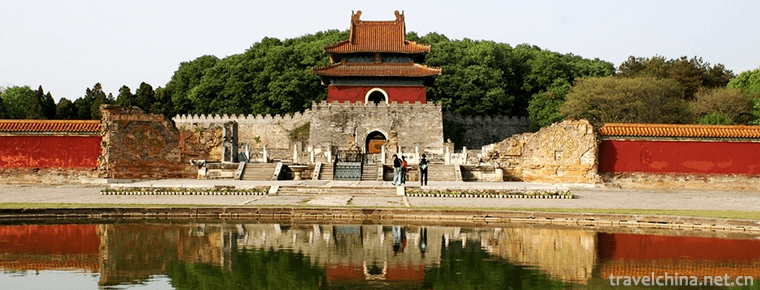
-
Portuguesestyle egg tarts
Portuguese egg tart, also known as Portuguese cream tower, caramel Mejit egg tart. Portuguese tart, known in Hong Kong, Macao and Guangdong, is a small cream pastry pie..
Views: 177 Time 2018-10-31 -
Zhongshan Park
Zhongshan Park is located in the south of the Forbidden City (Palace Museum) in the center of Beijing, west of Tian'anmen, and separated from the Palace Museum..
Views: 117 Time 2018-12-22 -
Harbin Amusement Park
Harbin amusement park is located at the junction of the outer Road area and Nangang District. It was founded in 1958. Originally known as Harbin Cultural Park, it covers an area of 22.8 hectares..
Views: 108 Time 2019-01-13 -
Qianchuan Scenic Spot
Qianchuan Scenic Spot, a national-level scenic spot announced by the State Council in 2004, is situated on the Bank of the Yellow River 20 kilometers east of Heyang County.
Views: 107 Time 2019-02-07 -
Babao Green Crab Rice
Two crabs, 700g, 165G glutinous rice, 45g ham, 20g open onion, 45g white fruit, 75g peanut, dried mushroom, dried asparagus, onion, ginger slices, yellow wine, salt and clear soup (300g).
Views: 371 Time 2019-03-26 -
Nanping Nanci
Nanping Southern Ci is a traditional form of music popular in Nanping, northern Fujian Province. It is generally believed that the Southern Ci in Jiangnan area developed gradually with the local tradi.
Views: 294 Time 2019-06-07 -
the Wu Ballads
Wuge is the oral literary creation of the majority of the people in Wu dialect area, which originated in southeastern Jiangsu Province, and Suzhou is the central area for the generation and developmen.
Views: 134 Time 2019-06-29 -
Xingguo Folk Song
Xingguo Folk Song has a long history. It is said that it was sung by woodcutters who built A Fang Palace in Xingguo in the late Qin Dynasty. Xingguo folk songs are lively, diverse in form and full of .
Views: 110 Time 2019-07-08 -
Yuchan mountain
Yuchan mountain is located next to Luxian County, Luzhou City, Sichuan Province. It is named for its mountain shape and stone like shape. Yuchan mountain has always been famous in South Sichuan for its secluded mountains, strange stones, beautiful waters and many cultural relics. .
Views: 342 Time 2020-10-15 -
Deyang climate
There are obvious differences in climate between the mountainous area in the northwest and the plain and hilly area in the southeast of Deyang City. The main climatic characteristics are: mild climate, four distinct seasons, abundant rainfall, long frost free period and obvious .
Views: 75 Time 2020-12-14 -
Mineral resources in Guangan
Guang'an City is located in the middle part of Huaying Mountain. The mineral resources are mainly distributed in Huayingshan, Tongluoshan and Mingyueshan anticlines, and two synclines of Dongcao and Xicao in Linshui county. More than 30 kinds of mineral depo.
Views: 287 Time 2020-12-19
